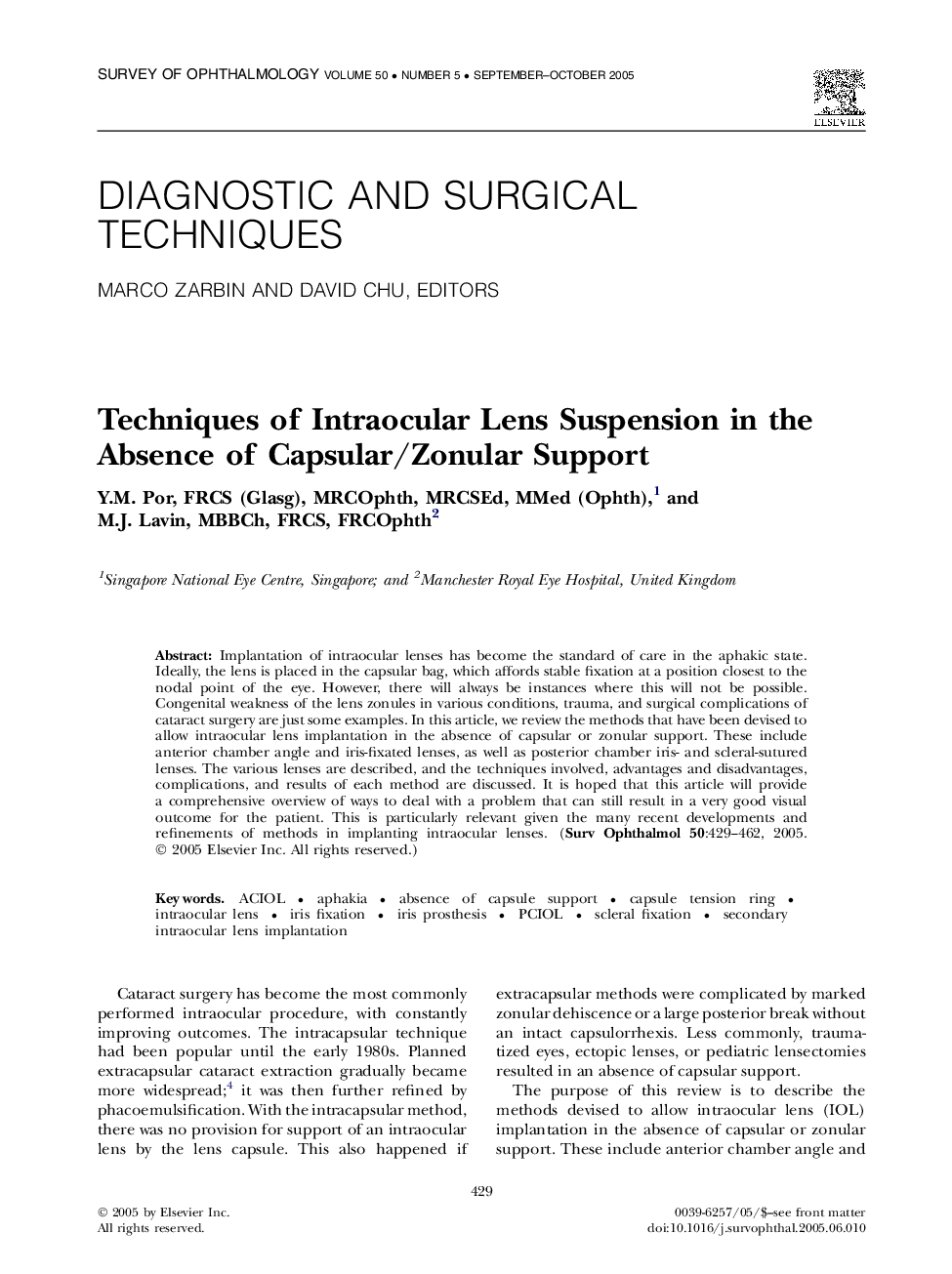| Article ID | Journal | Published Year | Pages | File Type |
|---|---|---|---|---|
| 10078244 | Survey of Ophthalmology | 2005 | 34 Pages |
Abstract
Implantation of intraocular lenses has become the standard of care in the aphakic state. Ideally, the lens is placed in the capsular bag, which affords stable fixation at a position closest to the nodal point of the eye. However, there will always be instances where this will not be possible. Congenital weakness of the lens zonules in various conditions, trauma, and surgical complications of cataract surgery are just some examples. In this article, we review the methods that have been devised to allow intraocular lens implantation in the absence of capsular or zonular support. These include anterior chamber angle and iris-fixated lenses, as well as posterior chamber iris- and scleral-sutured lenses. The various lenses are described, and the techniques involved, advantages and disadvantages, complications, and results of each method are discussed. It is hoped that this article will provide a comprehensive overview of ways to deal with a problem that can still result in a very good visual outcome for the patient. This is particularly relevant given the many recent developments and refinements of methods in implanting intraocular lenses.
Related Topics
Health Sciences
Medicine and Dentistry
Ophthalmology
Authors
Y.M. FRCS (Glasg), MRCOphth, MRCSEd, MMed (Ophth), M.J. MBBCh, FRCS, FRCOphth,
